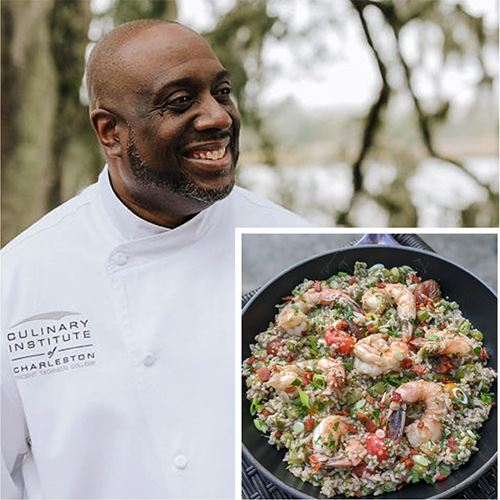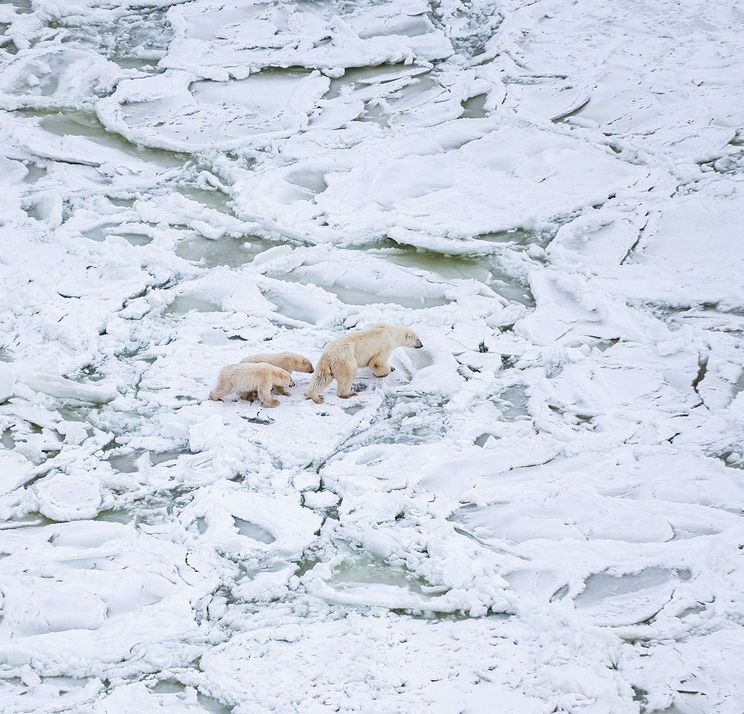Polar bears, seasonal blooms, remarkable women, and the food heritage of one of South's most charming cities are part of the eclectic mix in this week's almost-spring edition.
They're among the offerings designed to make sure you continue to enjoy what you,ve come to value from Smithsonian Associates: programs and experiences that are entertaining, informative, eclectic, and insightful.
Women Making Change
 Mary Lou Williams, ca. 1946, by William P. Gottlieb
Mary Lou Williams, ca. 1946, by William P. Gottlieb
In New York City's Chinatown, college student Regina Lee and other volunteers organized a neighborhood health fair to improve health literacy in their community.
When owners of a San Antonio, Texas, pecan-shelling plant reduced low wages even more, 21-year-old Emma Tenayuca led the Mexican and Mexican American workers in walking out. Lee and Tenayuca are among the women spotlighted in a new series of short animated videos from the Smithsonian during March, Women's History Month. As part of the ongoing Because of Her Story initiative to spotlight lesser-known American women who are working together to make change, a new video appears each week.
Fredie Adelman, director of Smithsonian Associates, has seen significant changes in women's working lives over the course of her museum career. She recently joined the host of the Not Old Better podcast to talk about topics including Women's History Month, how women leaders shaped Smithsonian Associates over the course of its own history, and a preview of a Saturday, March 27 Smithsonian Associates Streaming program that brings a diverse group of significant women out of the shadows of history. The daylong event examines a 17th-cenury Dutch art star, a pioneering German naturalist, the women who shaped the progressive politics of the early 20th century, and the generations of blues and jazz artists who carved their own paths to success and recognition in the male-dominated music world.
Watch the Because of Her Story Videos
Listen to the Podcast
Register for the Program
The Flavors of Charleston
 Chef Kevin Mitchell
Chef Kevin Mitchell
Charleston, home to a singularly rich food tradition, boasts a cuisine that combines ingredients and cooking techniques of three divergent cultural traditions: Native Americans (hominy grits, squashes, and beans), the Gullah Geechee (field peas, okra, guinea squash, rice, and sorghum), and European settlers (garden vegetables, grains, pigs, and cattle). This vibrant mixture of ingredients and techniques is the heart of Charleston cooking.
In a Tuesday, March 23 Smithsonian Associates program, Kevin Mitchell, a faculty member of the Culinary Institute of Charleston and a South Carolina Chef Ambassador, and historian David S. Shields, author of Southern Provisions: The Creation and Revival of a Cuisine, take a delicious dive into the culinary specialties of the Charleston region, which include the famous rice and seafood dishes of the Low Country. Chef Mitchell demonstrates a recipe featuring the one ingredient that sets Charleston apart from any other food city in the country: rice. He makes the dish that makes Charleston the place you want to come eat, Hoppin' John.
Register for the Program
Buried Treasures
 (Photo: Elaine Sciolino)
(Photo: Elaine Sciolino)
The elements of potential disaster were always waiting: a legendary river prone to overflowing; an international cultural treasure situated on its banks; and the havoc wrought by climate change. They coalesced in 2016, when flooding in Paris brought the Seine to its highest level in more than 30 years, threatening the Louvre's collections. In response, a new storage facility-described as "a Bauhaus bunker"-was constructed in the northern French town of Liévin, and in 2019 a quarter million of the museum's artworks were transported to safety in its vaults. Smithsonian magazine recently reported on the Louvre Conservation Center, which will also serve as an art research center.
The Seine played a very different role when another Parisian icon faced an emergency. The dramatic story of how water from the depths of the river saved Notre-Dame from destruction during the devastating fire in April 2019 is among those recounted by longtime New York Times correspondent Elaine Sciolino in a Thursday, March 25 Smithsonian Associates Streaming program. In an evening devoted to history and the allure of the Seine, she examines how it defines the essence of Paris and finds enduring reflections in art, literature, music, and film.
Read the Smithsonian Magazine Article
Register for the Program
Spring Colors

You know spring has officially arrived in Washington when the National Cherry Blossom Festival unfolds in all its color. The Smithsonian American Art Museum is collaborating with the festival for a series of virtual public programs, part of its popular online Family Zone series. A streaming cherry blossom celebration on Saturday, March 20 features Japanese takio drummers and a gallery of artworks in the museum's collection that encourage families to explore art, nature, and color. In a virtual Art & Me Preservation Family Workshop on Saturday, March 27, children ages 3 to 8 can discover how Smithsonian conservators preserve everything from paintings to Japanese tea bowls and learn to make their own cherry blossom-themed creations. And the museum's Family Zone webpage is the place to go for more seasonal crafts, coloring pages inspired by artworks, videos, and other fun.
If your spring isn't complete without experiencing its natural beauty in person, remember that the gardens of the Smithsonian are welcoming visitors. The Castle's Enid A. Haupt Garden, the Kathrine Dulin Folger Rose Garden at the Arts and Industries Building, and the intimate brick pathways of the Mary Livingston Ripley Garden are just a few of the spots on the National Mall perfect for a leisurely walk in the sunshine. Smithsonian Gardens celebrates one of the season's most distinctive blooms during the week that begins March 14, as Magnolia Madness takes over its social media sites, blog, and a free special Let's Talk Gardens webinar with a magnolia expert on Thursday, March 18.
Virtual Cherry Blossom Celebration
Learn More About SI Gardens
The Loneliest Polar Bear
 A mother and cubs venture onto Hudson Bay. (Neil Ever Osborne)
A mother and cubs venture onto Hudson Bay. (Neil Ever Osborne)
Nora is a feisty polar bear with a will to live. She was abandoned by her mother a few days after her birth, and zoo handlers knew they had to act fast to keep her alive. They also knew they were about to raise by hand one of the world's most dangerous predators. The significance of the cub's survival was magnified by the fact that polar bear numbers are shrinking as the species is being forced to adapt to harsh climate change.
Drawing on his new book The Loneliest Polar Bear, journalist Kale Williams views the world through Nora's eyes in a Tuesday, April 13 Smithsonian Associates Streaming program. He explores the importance of polar bears; climate change and its effects on both wildlife and Alaskans whose livelihoods depend on them; and how we might develop a more respectful relationship with the natural world. He's joined in conversation with Nate Blakeslee, author of American Wolf: A True Story of Survival and Obsession in the West.
For some stunning looks at the creatures encountered by a conservationist from Polar Bears International during a research mission to Manitoba, take look at the cover story from Smithsonian magazine's March issue.
Read the Smithsonian Magazine Article
Register for the Program